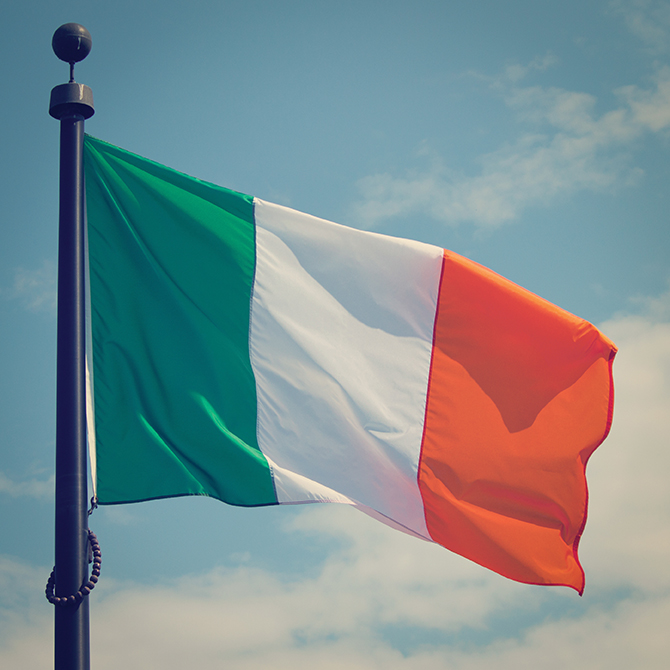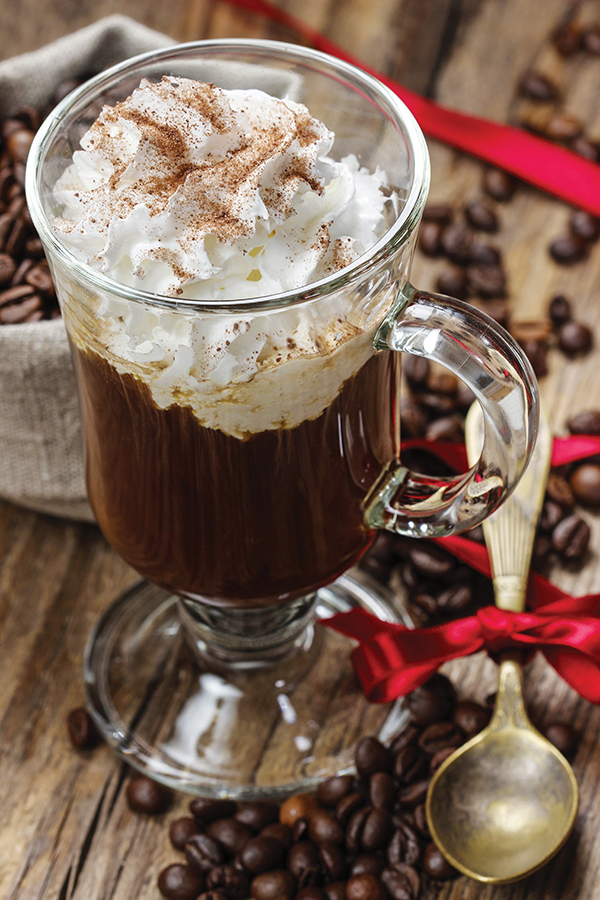Trending Articles ...
Drams of Eire: The Irish Boom Continues

While bourbon and Scotch get more press, Irish whiskeys have quietly become the fastest growing, barrel-aged spirit in America. So what’s the attraction?
It may be no more complicated than Irish whiskeys are exceptionally easy to drink. They’re accessible, highly aromatic and loaded with palate pleasing flavors. Equally tempting, years of steadily increasing popularity hasn’t significantly driven up their price making them relative bargains. For a category long existing with nary a pulse, these are heady days.
There was a time when Irish whiskey ruled supreme. By the end of the nineteenth century, there were over 160 active distilleries in the country producing 400 brands of Irish whiskey. It was exported to every port of call in Europe, the British Empire and America, exceeding the worldwide sales of all other types of whiskey combined. It had become the world’s spirit of choice.
Two historical events brought the Irish whiskey industry to its knees. The first was the 1916 Irish War of Independence against Great Britain. In retaliation, England level a trade embargo with Ireland, which denied distillers access to markets throughout the British Empire. Then in 1919 came the American Prohibition and overnight Irish whiskey’s largest consumer base effectively vanished. The cumulative effect on the Irish economy was devastating.
During the same time, Scotch whisky distillers were thriving. Unaffected by the British embargo, exports of Scotch skyrocketed and truckloads of whisky found their way across the Canadian border and into American speakeasies. Scotch soon became this country’s whisky of choice, a distinction that it hasn’t yet relinquished.
There are several telling differences between Irish and Scotch whiskies. Unlike Scotch, Irish whiskey is distilled from both malted and unmalted barley. The malt used in the distillation is dried in closed kilns, rather than over peat fires as is the traditional practice in Scotland. As a result most Irish whiskeys lack the peaty smokiness of Scotch. Irish producers also triple-distill their whiskey and prefer to develop its character in the vat, rather than post-distillation blending.
Ireland’s standards of quality are such that there is no such thing as a mediocre Irish whiskey. In a marketplace where demand for super-premium spirits is soaring, Irish whiskeys are hot commodities. The strategy is clear, give the people what they want and order more bar stools.
Here’s a brief look at the category’s franchise players.
• Black Bush — Created in 1934 by the master distiller at the Bushmills Distillery, the inimitable whiskey is a blend comprised principally of malted barley whiskeys triple-distilled in copper pot stills. Most are aged up to nine years largely in Oloroso sherry oak casks. Black Bush is a full-bodied beauty with a sherry influenced nose and a rich, malty palate. Its silky body makes Black Bush a highly accessible whiskey, an ideal entrée to the category.
• Bushmills 16-Year Old Single Malt — This highly revered single malt is a blend of whiskies matured a minimum of 16 years in three different types of wood—ex-bourbon barrels, Port pipes and Oloroso sherry casks. Each wood contributes a distinctive character to the glorious finished product. It has a voluminous bouquet and a tantalizing, somewhat fruity palate. The finish is long and flavorful with delicate Port notes.
• Clontarf Irish Whiskey — Made in Dublin by the producers Buru Irish Vodka, Clontarf is triple distilled from grain and spring water. It is aged in ex-bourbon barrels and filtered through Atlantic Irish oak charcoal. The full-bodied whiskey is delightfully exuberant and flavorful.
• Connemara Single Malt — Produced at the renowned Cooley Distillery in Dundalk, this award-winning single malt is distilled in a traditional pot still using malted barley dried over a peat fire. The peat imbues Connemara with an intriguing smoky edge and flavor. It’s a glorious malt reminiscent of the whiskies of Islay.
• Jameson 12-Year — John Jameson has been distilling whiskey since 1780 and their accumulated expertise is immediately evident in this 12-year old gem. It’s a blend of malted and unmalted barley whiskeys aged in ex-bourbon barrels and Oloroso sherry casks. The sherry-finished whiskeys in the blend give it a slightly sweet, fruity and nutty palate.
• Jameson 18-Year — A stunning accomplishment that pays homage to the Jameson Distillery’s centuries old preference for aging whiskeys in Oloroso sherry casks. After maturing a minimum of 18-years in the sherry wood, the whiskey is finished for six-months in American oak. It has a wafting, sherry-influenced bouquet and a broad palate with nutty, spicy notes. An exquisite whiskey of great substance and style.
• Knappogue Castle Single Malt — The current vintage of this celebrated single malt is the most robust and flavorful to date. The 12-year old, pot-distilled whiskey is generously aromatic and loaded with citrusy, malty and honeyed notes. The finish is lingering and eminently satisfying. Knappogue Castle is an exceptional buy at twice the price.
• Michael Collins Single Malt — Produced at the Cooley Distillery, this marvelous malt is distilled in small batches from 100% peated barley malt and matured in ex-bourbon barrels between 8 to 12 years. It has a brilliant bouquet and a dry, appetizing palate with succulent fruit notes. The malt finishes long and silky smooth.
• Midleton Very Rare — The highly esteemed Midleton Very Rare is a vintage-dated blend comprised of pot-distilled whiskies made from both malted and unmalted barley and matured up to 25 years in American oak barrels. Only a scant 50 casks are bottled each year. Midleton VR has a luxurious pot-still character with a silky texture and mesmerizing array of flavors.
• Powers — In a country known for their abiding appreciation of whiskey, Power’s remains the best-selling brand in Ireland. It’s an elegant blend comprised of approximately 70% pot still whiskies and no malt used in the blend. Founded in 1791, Power’s was the first to market their whiskey in bottles.
• Redbreast Pure Pot Still — This prestigious whiskey is crafted in heavy copper pot stills from malted barley and spring water and then barrel aged for a minimum of 12-years. The whiskey is complex, delightfully assertive and smooth as satin. It has a bouquet laced with malt and fruit aromas and a palate brimming with the flavors of honey, spice and sherry.
• Tullamore Dew — Created in 1829, Tullamore Dew is triple-distilled in pot stills at the Midleton Distillery in Cork and aged for a minimum of three years in American oak barrels and ex-Sherry casks. It has a semi-sweet, fruity bouquet, a light body with a dry, woody palate with a caramel finish. Tullamore Dew is a premium dram at a value price.
• Tyrconnell Single Malt — The brand dates back to 1762 and is now distilled at the Cooley Distillery, Tyrconnell is a flawless whiskey with a full body, malty bouquet and a slightly sweet flavor. It has a long, marvelously dry finish. Tyrconnell Single Malt compares quite favorably with the single malts of the Speyside.

Mastering the Irish Coffee
One of the best reasons to open a bottle of whiskey is the Irish Coffee. As the story goes on a particularly cold evening in 1952, the chef at the Shannon airport restaurant laced his coffee with a healthy dram of whiskey, a spot of sugar and a layer of whipped cream. The combination was pronounced utterly delicious. The drink soon became a specialty of the airport’s bar and took on a life of its own after that.
The same year, a columnist and travel writer for the San Francisco Chronicle passed through Shannon on his way home. He sampled several of the coffees and was immediately smitten. Word of the Shannon airport’s coffee made its way to the Buena Vista Café on Fisherman’s Wharf. The drink became an immediate hit and has been ever since.
Despite its simplicity the appeal of the Irish Coffee is nearly universal. It’s prepared by lacing freshly brewed coffee with a splash of simple syrup, a measure of Irish whiskey and a layer of frothed milk or whipped cream. For sport try the Irish Coffee Royale. It features an additional shot of Kahlúa. Another version includes Bailey’s Irish Cream and a touch of Irish Mist or Celtic Crossing.

